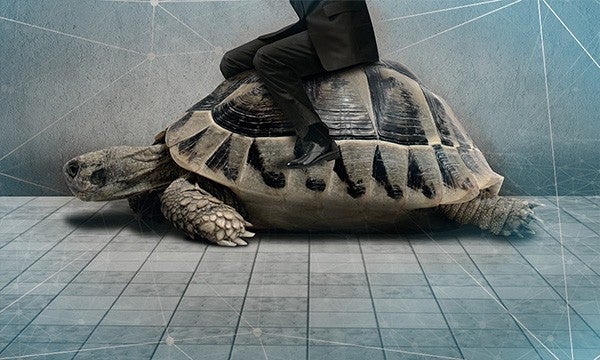Slow and Steady Does NOT Win the Race

We’ve all heard the story of the tortoise and the hare and are likely familiar with the lessons to be learned from this story. But, what if the hare hadn’t stopped running?
Now there’s an interesting angle. Let’s make it more real.
The facts (as I see them):
- No one wants slow broadband. It doesn’t matter how steady (reliable) it is.
- If you are only providing a “fast pipe” your subscribers will look to others for the experience.
- If you are slow to deliver a differentiated experience, your competition—especially consumer brands like Amazon EERO, Google Wi-Fi, and Plume–will win.
The traditional approach
Historically, companies focused exclusively on hardware-specific benefits of traditional residential gateways that might take 12-18 months to evaluate and begin to deploy to their subscribers. Inevitably, there were always challenges with back-end integration, interoperability, lab testing, field testing, network challenges, etc. The only way to stay ahead of the competition with this approach is to constantly deploy new hardware, increase connection speeds, and reduce prices. In a rapidly changing market, with shifting subscriber needs, this is insupportable. Slow and steady will not meet the needs of your subscribers.
What’s different now?
Successful service providers today are solving this problem by adopting end-to-end solutions that remove the obstacles of long evaluation and testing times. Better solutions ensure that they can bring new systems and services to market quickly for lightning fast deployments to not only keep up with changing subscriber needs, but to also proactively provide new value-added services.
How is this possible?
Service providers can become the hare by embracing a premises operating system (OS) that is container-based and runs on top of cutting-edge Wi-Fi systems. Now, the residential gateway is transformed into a dynamic system, constantly being improved and enhanced. The OS allows for appealing new services and applications to be added on an ongoing basis, increasing subscriber satisfaction and generating additional revenue for years to come. Here are two great examples:
- Jade Communications brought their most recent Wi-Fi 6 certified system to their subscribers in ONE business day. When customers ask about speeds? Their response: “We don’t sell speeds, what Internet Experience would you like to have?”
- Pineland Telephone Cooperative has cut 15-20 minutes from each installation, enabling more installs each day by transitioning quickly to the BLAST u6 carrier grade Wi-Fi system.
These are only a couple of recent examples of stories where embracing an end-to-end solution, like the Revenue EDGE and our EXOS powered EDGE Systems, enables service providers with everything they need to be nimble, innovative and faster to market than their competition.
What should I do?
Service providers today cannot afford to passively contend with competitors who don’t stop running.
- Check out the Revenue EDGE end-to-end solution to speed your time to market.
- Focus on using data and insights to delight your subscribers and ensure they have the ultimate experience without moving to the competition.
Related Articles




